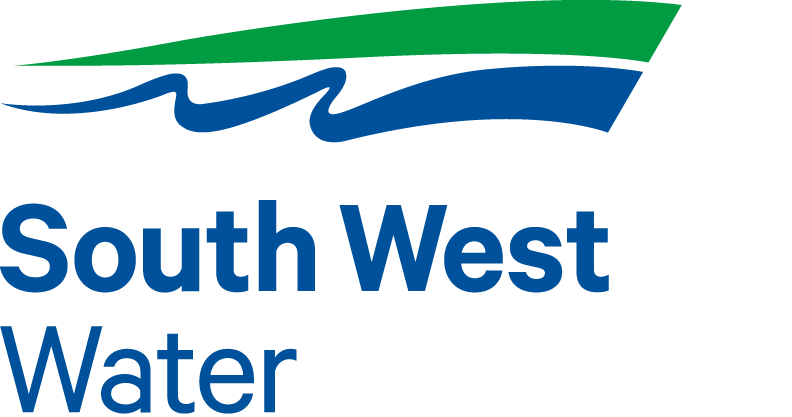Summary
RAF Digital supports the Royal Air Force Air Command through the provision of operational and capability analysis. The scope of this support encompasses air missions, people, goods, reconnaissance, surveillance, air transport, refuelling and air interdiction.
In such a complex organisation that is at the heart of British Defence, some decisions made can be of national criticality. The RAF must be confident that all relevant information is available without delay to decision makers, at any location, at any time.
This intelligence is also vital in planning change. For instance, if an airframe is being considered for retirement, what impact will that have on other equipment and services, and what altered support arrangements will follow?
With this in mind, the RAF needed a Digital Twin to be able to view the connected operational landscape and make informed plans, reliably and efficiently. This is where CACI’s support came in.
Company size
10,000+
Industry
Defence / National Security
Products used
Challenge
Defining these information services and understanding their complexities was the first challenge.
Air HQ Commands a complex range of mission capabilities and activities, which are dependent upon information delivery across a large portfolio of information systems and services.
Designing a solution that would ensure the data collected would be to the right level of detail.
While all relevant intelligence was already in existence, it was in silos—geographically dispersed and in the heads of SMEs, on spreadsheets and other documents in differing formats. In many instances, the amount of detail presented a “wood for the trees” problem, and many sources were not easily understandable. A lack of any unifying information system meant that in a typical situation, decision makers would have to telephone SMEs and others in multiple locations to gather information and make significant efforts to assimilate that information into a usable format that could inform decision making.
SMEs, along with most other personnel, move post every two years, meaning that expert knowledge is lost.
Solution
At a top level, the requirement was to help RAF Digital drive mission-focused information system transformation across all Air domain Mission Vignettes.
Core to the requirement was to deliver knowledge of what equipment is in place, and where, so that operations such as air missions can successfully proceed. This requires a single view across 25 platforms, 4500 information services and 120 mission vignettes.
RAF Digital sought a service that could assemble data in consistent formats from multiple sources, relating to a variety of equipment and services. The solution needed to:
- Be interrogatable using many filters.
- Produce reports both in tabular and highly visual styles to aid understanding.
- Be consistent in presentation of data despite inconsistent input sources.
- Maintain up-to-date information through an ongoing managed service with CACI to continue to deploy our skilled business analysts.
This is where Air Inform came to be. It is a software tool that enables a user to see how the RAF is organised in terms of information flows, modelled in terms of aircraft and operational capabilities.
Critically, it enables RAF decision-makers to understand the data exchanges required to support a mission, including pre-flight, during flight and post-flight phases, and the systems required to support these exchanges. Hence, these decisionmakers can easily answer questions such as what systems are required to support a deployment and what operational capability a system underpins and, thus, identify vulnerabilities and redundancy and inform replacement programmes.
At the heart of Air Inform is a complex operational architecture. A workshop process was key to eliciting the information, understanding connections and establishing the optimum depth of detail. During this initial phase of joint application development, both CACI analysts, SMEs and other stakeholders created an effective working partnership.
Following the architecture’s development, CACI created a system for intelligence collection and analysis and overlaid it with visual models to present actionable intelligence from multiple perspectives to end users. Key features include scenario modelling and inter-dependency visualisations by mission as well as platform and information systems (Ground, Air & Space).
Security was also important: the system can be air-gapped, and a version classified as “secret” is available.
In terms of technical capabilities, Mood software was used as an object-oriented approach for the visualisation of components to create metamodels and define the relationships between features in a solution architecture.
Results
Air Inform is now embedded within the organisation and is effectively supporting decision makers which not only saves time, but improves the quality and speed of their decisions. Several benefits have already been recognised, including:
- RAF Digital can now plan effectively for replacement of airframes.
- Interdependencies are now better understood, meaning that changes can be made without unexpected gaps in service provision that could affect the RAF’s ability to deliver its commitments.
- Financial management is now supported, helping to avoid over, or premature, spend.
- Intelligence is no longer bleeding out as people move on, thus maintaining the integrity of the knowledge base.
- New personnel can now quickly understand their working landscape.
- Security is now protected through more secure data transfers.
- Data architecture now identifies inefficiencies and drives improvements.
If Air Inform was removed, more personnel would have to be deployed back to managing and analysing data, with a less accurate and speedy outcome. Flt Lt Connor Maguire MEng RAF, elaborated on the vital role that CACI’s support has played in achieving their goals.

The architecture-based structure of the solution means that going forward, extensions to functionality can be identified and planned for with confidence. Several opportunities are now under consideration, including the ability to view and act upon equipment obsolescence or end of life data.
Summary
Hotter Shoes is the UK’s biggest footwear manufacturer. It’s a digitally led, omnichannel specialist footwear brand with a clearly defined, large and growing target audience.
Company size
5,000
Industry
Retail
Products used
Challenge
Hotter already had a strong heritage in direct-to-consumer marketing when Stephen Shawcross, Senior Global CRM Manager, joined the company four years ago.
Stephen explains: “Like many retailers, we had an abundance of data but it was fragmented. Our first challenge was to bring all the data we had together. We created a true omnichannel single customer view (SCV) that included online, store and contact centre order data, footprint 3D scanning and augmented reality fitting data, web browsing data and email engagement data.
Bringing all data into one location
Creating a single customer view
Solution
CACI’s Fresco data stood out from the competition to offer the level of dynamic detail that Hotter needed. The CRM team was able to match 98% of consumers that order from Hotter to a CACI segment, at an individual customer level.
CACI’s consultant provided “amazing” support for Stephen and the team, with initial training and advice about data mapping and regular check-ins to make sure they have everything they need.
Stephen says, “The big appeal of Fresco was being able to map to an individual customer. A lot of profiling customer systems offer flat pen portraits but aren’t necessarily actionable. CACI matches a customer to a segment and means you can do something with it in real time. We immediately stepped up the level of personalisation beyond buying and browsing behaviour to supercharge our Customer Experience Strategy.”
Results
The combination of buying behaviour, digital engagement, foot-scan data and CACI demographics means Hotter Shoes’ marketing is hyper-relevant and offers true personalisation at scale.
Stephen explains:
“At the highest level, we personalise based on CACI segment, recency, frequency, monetary value (RFM) commercial segmentation and channel preference across all customer touchpoints.”
Hotter is able to create relevant, personalised website homepage images, messages and email content as well as Google pay per click ads, social media posts and direct mail. The profiling is specific and sophisticated – there are currently 27 different direct mail variants. We can prospect with social media marketing, finding and targeting lookalike audiences.


Hotter is also exploiting the Fresco data to support acquisition among new customer groups. Beyond their traditional market of customers aged 55+, the firm is looking to attract the next generation. Fresco segmentation is helping the team identify the most likely personas and to design messages, campaigns and products that will appeal to them.
Summary
Hackney Youth Justice Service works with multiple agencies in the London Borough of Hackney to reduce youth offending and reoffending, and mitigate the impact of crime on families, communities and victims. Information sharing between these agencies is critical to managing the risks and vulnerabilities associated with young people, their families and the community.
Industry
Education
Products used
Challenge
Hackney Youth Justice Service stores files about young people in its service using a document management system, Open Text eDocs. Adding data to this system was very manual and time consuming, and involved sourcing information from multiple systems. This opened up the risk of error and sharing the wrong information with the wrong people, as well as making data sharing very difficult.
Manual and time-consuming process involving multiple systems
Potential risk of error and compliance issues
Difficulty with data sharing with relevant people
Solution
CACI integrated eDocs with the ChildView youth justice application, ensuring all documents are accessed from a single source. Integration works both ways, so when a file is added to eDocs it is immediately added to the person record in ChildView.
The system is used by youth offending workers to access documents from across the council and other agencies including social care and health services.
Results
Since adding an integration layer between eDocs and ChildView, Hackney Youth Justice Service has been able to save considerable time in storing, sharing and acting on information. And because documents are now stored in one place, they have also been able to save on IT storage and associated costs.


Summary
As the UK’s largest producer of low-carbon electricity, EDF Energy is committed to supporting electric car adoption as part of their vision of a low-carbon future. Using their expertise in energy to benefit EV drivers, EDF Energy created an Electric Vehicle (EV) proposition (vehicle leasing, an EV tariff and home chargers) to be targeted appropriately to existing customers who own an EV, and those who may buy one in future through a nurture campaign.
Company size
10,000+
Industry
Utilities
Services used
Challenge
To target customers suitable for home charge point installation and home energy plans designed for EV users, identifying customers who own an EV was required. With their move into EV car leasing, EDF Energy needed to be able to identify consumers who had a propensity to want to purchase an EV in the future.
Solution
The Segmentation
Data analysis gained from smart meters was utilised in identifying EDF Energy customers who were likely to be EV owners. Predictions were made based on consistent, regular peaks and troughs in consumption combined with demographic filters.
CACI’s demographic data was used to gain an insight into consumer characteristics and behaviours and identify EDF Energy customers who are inclined to purchase an EV.
The Customer Journeys
Data analysis informed a customer journey that was designed by CACI in accordance with customer profiles that had been created, as well as an understanding of the EV buying process. The life stages of the journey reflected a customer-centred approach, recognising the needs of the customer when making a considered purchase:
- Awareness: of EDF Energy in the EV space
- Consideration: EDF Energy in the EV market and EV in general
- Education: on the EDF Energy EV proposition
- Review: against the customer’s specific needs
The journey of the EV proposition was customised throughout, recognising the different needs and requirements of the customer. A customer’s behaviour was a key driver in ensuring the right message was delivered at the right time. The individualised journey optimised behaviours to indicate when the customer was ready to progress, entering a Nurture programme to keep the proposition front of mind when it was suggested they were still transitioning through the average two year-long sales cycle. Interactive content was designed to complement the customers quadrant and enhance the journey and life stage, creating innovate user experiences and providing a personalised journey of follow up communications tailored to the customers interaction.
Results
The campaign is still in its early stages, having recently launched and is already experiencing impressive results. The first email in the campaign’s series resulted in an open rate of 45%. This is 28% above the automotive industry standard!


Summary
Digitisation of Joint Service Manuals (JSM) for Defence Equipment and Support Defence Equipment & Support (DE&S) are the procurement arm of the UK Ministry of Defence. They have a pivotal role in fulfilling equipment requests from across the Front-Line Commands, Executive Agencies and At Arm’s Length Bodies such as the Submarine Delivery Agency (SDA). Their remit ranges from straightforward equipment procurement to the development of new technologies and ensuring the UK Armed Forces can maintain availability and readiness for a fleet of over 400 different platforms.
DE&S summarised the overall task as “to develop the Joint Service Manual (JSM) concept and codify the Receipt, Inspection, Issue, Storage & Maintenance (RIISM) Service Category”. CACI’s main task was to digitise the JSM by bringing them into the “COMPASS for Land” digitised group of capabilities. In fact, CACI were able to go beyond digital transformation of the RIISM manual by adding 3 other important manuals.
DE&S prioritised a solution that not only digitised JSMs but also facilitated improved compliance and included interactive features to enhance suppliers’ understanding of and adherence to JSMs, making the process easier for them.
Company size
10,000+
Industry
Defence, National Security
Products used
Challenge
The commercial documentation is complex, lengthy, and sometimes didn’t keep pace with the evolution of processes over time. Because of this:
Compliance wasn’t high enough.
Interpretations of the commercial documentation sometimes resulted in incorrect actions.
DE&S needed a better way to support all actors in the procurement processes to save time, reduce individual differing interpretations, and improve compliance overall.
Solution
CACI created digitised JSMs with a flexible search facility, explanations of roles and responsibilities, and relevant dependencies involved in delivering items for DE&S.
The solution enables searching across multiple JSMs, for instance a search for “quality” can be set to bring back all quality references in all JSMs. A user can bookmark favourite sections for repeat reference and can make suggestions in the solution for future enhancements of the functionality.
CACI’s large-scale data visualisation and digital twin modelling platform Mood was employed for the document digitisation aspect of the project. From a delivery perspective, this was an example of the CACI Mood team working alongside colleagues from other suppliers and within the Defence industry in a single delivery team under the overall management of Equinox, DE&S’s private sector programme delivery partner. This type of “Rainbow Team” approach worked well. Not only is Mood easy to integrate within a wider process that uses other software tools, but bringing different suppliers together into one team with a single leadership reduces barriers in communications and speeds up delivery.
Bringing the JSMs into the overall Mood Compass for Land* solution brought extra benefits of a pre-existing sign-in apparatus, admin functions and feedback loops.
Results
Users report:
- It’s much easier to find the instructions they need.
- They have confidence that these are up to date.
- Fewer issues relating to process are arising.
- Efficiency is increasing.
- Communications between parties in an end-to-end process have been improved.
- Agreement is reached on actions faster, and with less debate.


In addition to the day-to-day operational benefits, the new digitised JSMs are supporting highly beneficial business analysis and root cause identification of areas for improvement.
CACI will continue to digitise JSMs as and when they are prioritised for action and will continue to make enhancements as required. Although this case study focuses on a Defence context, the challenges outlined in this case study will be replicated across multiple industries and operations where adherence to instructions is critical, sometimes even for the preservation of life and limb, but the quantity, complexity and changing nature of those instructions mitigate against compliance.
*Compass for Land is a Mood software solution that digitised the Common Support Model
Summary
Clear Channel approached CACI for support in differentiating customised out-of-home advertising solutions for their clients.
Company size
1,000+
Industry
Media & publishing
Products used
Challenge
Clear Channel needed data insight that would help them assess the opportunity for out-of-home advertising and campaign planning for clients. They wanted to understand the audience for each of their advertising sites and be able to convey this to clients, to evidence the value and relevance for their brand or campaign.
Advertisers may book individual poster sites, or selected groups of sites, or a full national campaign, depending on their aims. Lindsay Rapacchi, Insight & Research Director at Clear Channel, explains: “To help our customers achieve engagement and sales, we focus on two approaches: brand and activation. Branding solutions aim to prime all potential market buyers with positive brand associations. This requires maximum reach, priming as much of the potential market as possible.”
Develop an understanding of the different audiences
Need insights driven by data in order to assess opportunity
Be able to evidence value and relevance
Solution
CACI provided Clear Channel with the InSite system, populated with gravity models and granular data that measures and categorises the movement of people and transactions by brand and demographic.
Clear Channel uses this to filter its full list of poster sites to produce a relevant and effective target set for each client campaign. The outputs are displayed on web-based interactive maps, to help the client visualise the campaign and how its reach could support their marketing goals.
Results
Lindsay says: “We’ve been working with CACI for over four years, accessing consumer profiling and spending information and retail footprint through the InSite system. Our campaign planning team uses the system every day to identify sites and plan where our clients should put their ads.”


Summary
Centrica PLC is a FTSE 100 multinational utility company employing over 37,000 people, with annual revenue of £26bn and 30 million customer accounts*. Centrica sources, trades, generates, processes, services, stores and supplies energy to businesses and consumers in the UK and North America.
Company size
10,000+
Industry
Utilities
Services used
Challenge
Centrica’s telephony and networks department is constantly striving to deliver the very best service to its 30 million customers. Improving IT, delivery and technology capabilities is fundamental to this, yet the internal project delivery function managing these improvements was staffed predominantly by contract resources, which created several challenges.
Contract resource wasn’t aligned with corporate strategy; they added management overheads to the business and exposed Centrica to risk with individuals possessing niche expertise leaving the company. Costs were also escalating as critical individuals became expensive to retain.
The telephony and networks department decided to introduce a single outsourced delivery service to manage these issues, while at the same time improving network and IT delivery services across its business. Centrica needed to find a supplier with a proven track record in delivering complex network and IT projects, able to continually resource demand, and mitigate risk by ensuring knowledge was retained and shared with the business.
Contract resource not aligned to corporate strategy
Sourcing a supplier with proven delivery in complex network and IT projects
Risk of employees with niche expertise leaving the business
Solution
Centrica selected CACI as their managed services delivery partner to help them deliver a number of complex network and IT projects.
Their engagements included:
Delivery management.
CACI developed requirements in-line with both the business and suppliers to agree and deliver solutions across telephony and networks. This brought together experts in firewall, architecture, information systems security and operations.
Firewall management.
Working across the entire security estate, CACI designed, documented and delivered changes to the firewall in accordance with Centrica’s standards and agreed SLAs.
Results
Company-wide room booking system: Including development, packaging, testing and deployment, this programme is expected to save Centrica £9m in catering and room booking costs over 5 years.
Video conferencing: Comprising 45 video conference end-points located across Centrica and British Gas businesses, video conferencing was migrated to a fully hosted, centralised service from Vodafone. Centrica has since cut 10% of its travel and accommodation costs in just one year.
Voice transformation: By replacing all legacy telephony systems with Cisco Unified Communications and Genesys Intelligent Network Routing, CACI was able to help Centrica consolidate technologies and rationalise suppliers and associated support contracts.
Call routing: CACI designed and deployed a British Gas Services and Business Intelligent Call Routing programme, integrating it with SAP CRM and business workflows to optimise call delivery. Call handling time has since been reduced and customer experience improved.
*Figures correct as of FYE 2024


Summary
Cambridgeshire and Peterborough NHS Foundation Trust (CPFT) is an NHS health and social care organisation that provides services in inpatient, community and primary care settings. The Trust’s services support adult mental health, older people and adults, and children, young people and families. Its biggest bases are the Cavell Centre in Peterborough and Fulbourn Hospital, Cambridge, but its 4,000 staff are based in more than 50 locations, supporting a population of nearly one million people.
Company size
4,000+
Industry
Healthcare
Products used
Challenge
With new Patient-Level Information and Costings Systems (PLICS) regulations in force for Mental Health, CPFT needed to update its systems to comply. The Trust was in the process of implementing a new e-patient record system, so requested a PLICS deadline extension, which was granted.
Michelle Barnes, CPFT’s Assistant Director of Finance, explains: “We knew that the regulation would soon be extended to its community operations, so we decided to deploy a PLICS solution for both Mental Health and Community. We particularly wanted to find a system that felt intuitive to our team, so we could get the most value and efficiency from it.”
CPFT decided to replace its existing software outright, rather than upgrading it. The team selected CACI to integrate and implement our Synergy 4 patient level costing solution in a competitive process delivered through the NHS procurement framework.
System update in order to stay compliant
Intuitive system to achieve value and efficiency
Replacement of old system
Solution
Michelle Barnes says, “We had demonstrations of four different systems. We particularly liked the logic of Synergy 4 — it matched how we approach things in our day-to-day work. For example, it uses familiar language and terms in allocations and apportionments. Other systems that we reviewed seemed either too basic or too convoluted.”
Finance Assistant Michelle Clarke adds, “We had been using Excel for a lot of our costings, which had its limitations. Some of the solutions we evaluated were still spreadsheet-based — we wanted to move away from this to a specialist system. We liked the way the outputs were presented and being able to customise the dashboards, so we could choose what we wanted to see.”
Once CPFT had selected the CACI solution, CACI’s trainers booked in working sessions to upload data and support the CPFT team to embed their financial model. CACI delivered training on the features and functions of the system, in context of CPFT’s particular approach, and provided a high-level reference guide.
Michelle Barnes says, “CACI made us feel confident that they were on our wavelength whenever we asked questions about the system.”
Michelle Clarke agrees: “We worked with two different trainers, who were both really knowledgeable. They always understood what we needed – we felt the system was in our control from day one.”
Results
Synergy 4 provides granular, detailed and accurate information that CPFT can use in an intuitive and collaborative way across the Trust. Michelle Clarke affirms: “Synergy 4 gives us a lot more flexibility with the dashboards – we can share the information with clinical managers and show them the fluctuations, in more detail. You can customise it for wards, teams and communities. Before we only had average contact and bed days – now we can have much more detail when we talk about what services cost.
“Before, we basically divided total costs by the number of patients to calculate patient-level costings. Now, we have so much more scope to be detailed and to layer financial information with demographics and population data. For example, we can apply postcodes and look at metrics like staff downtime and travel time for patients.”
Michelle Barnes adds, “When we move into Critical Care boards, we’ll have to split our contract into two, for north and south. The extra information we can extract from PLICS at GP practice level will really help us see how to split that contract.”


Summary
Bupa was created in 1947 in the UK with the founding purpose to prevent, relieve and cure sickness and ill-health of every kind. The company is driven by a passion to provide high quality, affordable healthcare. Today, Bupa is an international healthcare company, providing health insurance, treatment in clinics, dental centres, hospitals and care homes.
Company size
10,000+
Industry
Healthcare
Services used
Challenge
Richard Glassborow is the Direct Distribution and Marketing Director for Bupa UK Insurance. He explains:
“Our challenge was no less than a marketing transformation. When I met with CACI a few months after taking up this role, I was looking for ways to transform our people, technology and data capabilities. Transforming our customer journeys was my top priority. We have a big customer base with many different journeys, from finding customers, bringing them into the funnel for conversion, on-boarding, renewing, retention and off-boarding, as well as managing claims. Customer expectations for personalised engagement are very high: they’re set by technology-led organisations like Amazon. In healthcare, we needed to raise our game.“
Complete marketing transformation
Improving people, technology and data capabilities
Solution
The end goal was to give Richard and his team a roadmap to transform customer journeys, alongside an assessment of current data and technology gaps.
Bupa had some challenges with lead conversion and retention, partly due to a lack of personalisation in their communications. For the transformation roadmap, CACI built a suite of private medical insurance (PMI) customer journeys for different life stages, then converted those into contact strategies which could be developed and activated through Bupa’s Adobe technology platform. They were designed to be engaging, timely and relevant.
CACI looked at the technology and data dependencies in context of Bupa’s existing and future resources, identifying the changes needed to give Bupa the customer experience capability it wanted. CACI’s consultants produced a recommended strategic solution to transform data and technology by upgrading Bupa’s IT architecture.


Results
Richard Glassborow is very pleased with the report and recommendations made by CACI, he explains:
“This work has created clarity instead of ambiguity. It has given us momentum and given our senior team the assurance to take the next step. The tactical steps we’ve identified are key to breaking down barriers to change: we now have a credible plan to address them, so everyone is confident that the transformation is feasible.”
CACI is a preferred partner to Bupa for technology and implementation. The teams are working together on several strategic projects, including the single customer view, marketing distribution technology, and this infrastructure solution.
Summary
The British Red Cross was founded in 1870. The charity’s most important value is kindness. It helps anyone, anywhere in the UK and around the world, to get the support they need if crisis strikes.
The British Red Cross saw very high demand for its services in the UK during the COVID-19 outbreak. When the pandemic started, the Red Cross needed to undertake a huge response to help the most vulnerable individuals and communities in the UK, reaching over 1.5 million people with food, medicine, cash, emotional support and other help and advice. Thousands of extra volunteers joined the charity, helping it to support those who are suffering all kinds of hardship and distress because of the situation.
Company size
5,000
Industry
Non-profit
Products used
Challenge
Identify local areas where there was a need for charity help and support
Ensure services are being allocated to those with the greatest needs
Solution
CACI offered The British Red Cross a three-month trial of its Vulnerability Indicators. After validating the potential of the data during the trial period, the charity took out a subscription. The British Red Cross used CACI’s Vulnerability Indicators to index UK households in every neighbourhood (or MSOA – Middle Layer Super Output Area). Their modelling revealed locations where people were most likely to be in need of support, based on either their clinical, financial, socioeconomic and digital vulnerability as well as wider health and wellbeing factors.
Information that showed the prevalence of single-person households in an area combined with the Vulnerability Indicators was used to augment food vulnerability mapping. The British Red Cross identified households with limited access to third party and community support, creating a priority need for volunteer engagement.
Results
Vulnerability modelling enabled the British Red Cross to deploy volunteers in the right places, meet emerging needs and advocate for targeted financial and practical support for the most vulnerable people at this time.
By defining areas where financial vulnerability is greatest, The British Red Cross applied local knowledge about available support or facilities. Volunteers helping individuals and families access these. If they’re insufficient, vulnerability model insight helps community organisations and charities make a strong case for grant or lottery funding to help improve, using granular data evidence that relates to a specific area.
Where digital vulnerability is a key issue, such as for people living alone without technology skills or facilities, the British Red Cross can reach out to householders using leaflet drops or doorstep visits to offer assistance and information. The British Red Cross also made its vulnerability and resilience modelling and analysis freely available via public web portals.


Summary
Brighton and Hove’s Children’s Centres did not have a centralised Management Information System. They approached CACI to help establish a new, more efficient process.
Company Size
N/A
Industry
Education
Products Used
Challenge
Brighton and Hove’s data was managed in an ad-hoc manner, primarily using Excel spreadsheets. This made the production of accurate reports a very labour and time-intensive task.
Like all Children’s Centres teams across the country, Brighton and Hove were facing an ever-increasing dependence on the production of quality information, to demonstrate their impact to Ofsted and to help shape service delivery in the future.
Brighton and Hove also recognised the importance of establishing a robust process around the chosen system, ensuring that all Centres were using it in a uniform way, with a Central Administration team managing core data and producing central reports.
Production of reports are manual and time-consuming
Increased need on production of quality information
Need central management of core data and reporting
Solution
Brighton and Hove City Council ran a competitive tendering process in which CACI’s Children’s Centre Manager (CCM) system demonstrated the unique ability to tailor the solution to satisfy their needs. Following the tendering process and contract award, Brighton & Hove worked closely with CACI to ensure that the implementation of the system was a success and enabled a uniform set of activities to be designed and defined by their associated KPI targets.
As well as the core functionality around managing families, services and attendances, Case Work and Reporting, Brighton and Hove also purchased two additional modules – Barcoding and Messaging, which allow for time-saving around attendance recording through the implementation of barcoded registers and membership cards. To enable the Centres to identify specific groups and send pertinent messages (e.g. details of the next smoking cessation course to ‘Smoking Parents’) the Text Messaging module has also been implemented.
Results
Brighton and Hove’s Children’s Centres’ integration with Health led to information on new births being directly imported into the CCM on a regular basis. This resulted in greater data accuracy, substantial time saving on data input and the ability to easily combine data sets across NHS and Council systems. CACI developed a procedure which handles this upload automatically; skilfully and patiently negotiating the data security protocols of two large, public organisations.
The solution resulted in standardisation of attendance data across the entire service, which has meant a systematic approach to assessing performance, more confident completion of OFSTED Self Evaluation Forms and better transparency and accountability to the Advisory Groups that govern each centre.


Summary
When Agrovista, a leading supplier of agronomy advice, farming services and seed and crop protection products, wished to grow but faced unpredictable challenges when trying to do so, it became clear that data and technology would be crucial in supporting their growth ambitions.
Agrovista delivers agronomic potential to their customers by helping them manage their operations more efficiently and profitably. To do this, their services are provided in two streams: one being as specialists from the business who visit farms to assess disease pressure, weeds, infestations and nutrient deficiencies to increase the yield, the other as logistics and support teams that focus on the delivery of the solutions to any problems that arise in the specialists support stage, such as the provision of pesticides or nutrients.
Company Size
500
Industry
Agriculture
Services used
Summary
When Agrovista, a leading supplier of agronomy advice, farming services and seed and crop protection products, wished to grow but faced unpredictable challenges when trying to do so, it became clear that data and technology would be crucial in supporting their growth ambitions.
Agrovista delivers agronomic potential to their customers by helping them manage their operations more efficiently and profitably. To do this, their services are provided in two streams: one being as specialists from the business who visit farms to assess disease pressure, weeds, infestations and nutrient deficiencies to increase the yield, the other as logistics and support teams that focus on the delivery of the solutions to any problems that arise in the specialists support stage, such as the provision of pesticides or nutrients.
Challenges
Agrovista’s operations team endeavoured to fulfil all customers’ orders and further improve service levels and interactions with customers without losing that focus on core business functions. Due to their planning team’s unfamiliarity with route optimisation software, the business was keen to avoid major changes for the team. They also needed to find a way to efficiently ship products out from their 20 depots across the country, which was particularly difficult in rural areas.
Solution
Agrovista invested in CACI’s route optimisation software. This software was used to plan routes that met Agrovista’s business constraints, including a same-day delivery requirement. The implementation took advantage of the flexible integration options offered by the software, embedding it within Agrovista’s existing systems and automating the route creation process. This meant that compliant and efficient routes were pre-created for the planning team, all within software that they were familiar with.

Results
The newly automated process for route optimisation helped Agrovista achieve several goals. For example, the ability to plan efficient routes that adhered to all of Agrovista’s unique constraints allowed the business to deliver all orders on time, keeping their customers happy and minimising costs. The software changes that were made caused minimal disruption to staff and the wider business, instead increasing the time-efficiency of the planning and operations teams and simplifying processes, enabling them to re-focus efforts on the core business.
As one of their top trusted suppliers, CACI’s reactivity and proactivity helped the business achieve their cost-reduction and route optimisation goals and will continue to support their rapid expansion strategically, effectively and at cost. Agrovista was impressed with CACI’s people, systems and processes, scoring CACI a 10/10 for their overall partnership experience. Going forward, Agrovista is actively looking to grow their relationship by adding other products and services from CACI’s logistics portfolio.
Summary
A global provider of outsourced sales and marketing solutions for retailers and consumer goods companies, Advantage Smollan helps brands and retailers win at the point of purchase. Its services include field sales, brand activation, merchandising, retail audits, data analytics and technology solutions, all of which help enhance brand visibility, drive revenue growth and optimise in-store execution. With varied working practices and technology across Europe, the group needed a consistent field force solution that could enable it to grow its customer base in-market and across borders.
Company size
10,000+
Industry
Professional Services
Products used
Challenge
To create technology support for the core service, which is consistent across all markets.
Having grown largely through acquisition, Advantage Smollan was enjoying great success with its Europe-wide model offering sales and marketing solutions to retailers and CPG brands in 12 countries.
Yet, many of these companies had brought their own ways of working and legacy technology with them when acquired by the group, complicated by the fact each client challenge varies hugely by market.
As a result, it was difficult for the Advantage Smollan’s team to achieve consistency in what they deliver and measure between markets, and to implement multi-market projects across borders.
They needed a field force solution that could provide this operational consistency and – critically – maximise ROI in the process.
Solution
Having worked with Advantage Smollan’s UK business for 15 years, CACI was well placed to work with the global team to implement its InSite FieldForce and CallSmart solutions to help optimise sales and staffing resources.
A critical requirement for the solution was that the Advantage Smollan team needed to know which stores to visit and when, plus have access to the latest data, enabling them to react quickly to support sales and promotional activity in-store.
CACI processed the data to ensure the call-file — with details of calls made by field agents helping track and optimise operations in the field — was updated overnight.
They also ensured that sales teams’ routes were optimised dynamically, to make sure the Advantage Smollan team were able to visit the stores that had the highest sales potential.
Results
At CACI, we have been able to help Advantage Smollan achieve industry-leading ROI targets regularly, enabling the team to do — and win — business with customers based on delivering enhanced performance and value, by proving that they can identify the single most efficient way to deploy field force across multiple countries — a unique proposition across the European market.
The InSite FieldForce and CallSmart solution has supported the Group with promotional compliance consistency, making efficiency improvements even on projects with 98% promotional compliance levels.
It also introduced a move towards dynamic qualifying — continuously assessing and adjusting the criteria for qualifying leads or tasks based on real-time data and changing circumstance — so that their teams can visit the right stores where their teams will make the most sales.
Advantage Smollan is so pleased with CACI’s InSite FieldForce and CallSmart solutions that it introduced CACI to its international partners. The consistency provided by the field force solution means they can use group-wide KPIs and create benchmarks that optimise their salesforce activities in emerging and developed markets.
Learn more about FieldForce and CallSmart.


Summary
Defence Digital is the digital lynchpin in the Ministry of Defence’s (MOD) operations, supplying global personnel across the MOD with core IT services vital to their role. Many teams from all commands across the MOD, as well as industry partners, must create architectural models of operations and processes or create interactive solutions to encourage coordinated, efficient and safe working. These needs can be short- or long-term, planned well in advance or be unplanned urgent requirements, and could be for one person or over a thousand users.
As such, Defence Digital needed a software product and dedicated support that would be flexible enough to meet these multiple requirements, was scalable and instantly available without commercial delays or constraints.
Company Size
5,000 – 10,000
Industry
Defence, National security
Products Used
Challenge
A solution was required that could be easily learned, deployed swiftly, that enabled rapid building of models and operational solutions, but would be technically sophisticated enough to tackle a wide range of tasks.
The MOD required a service that would deliver:
- Flexible functionality in a single platform.
- Speed in deployment and training of users.
- A responsive support function.
- The opportunity to influence the future development of the software in partnership with the supplier.
- Build and maintenance of the IT infrastructure to support the software platform.
The software platform needed to:
- Be a no-code/low-code software platform.
- Give the ability to build architectures from which stakeholders could gain business insights.
- Be architecture framework-agnostic.
- Deliver the ability to create digitised operating frameworks.
- Enable analysis and presentation.
Solution
CACI and Defence Digital agreed upon an enterprise licensing approach, enabling anyone in the MOD to request a Mood license and access a new Mood repository the same day. This, paired with training provided on request, is all that is needed to start working productively with the large-scale data visualisation platform.
Our support service guides users to maximise Mood benefits, and CACI runs regular user forums to enhance the MOD Mood user community’s knowledge sharing. Many users have now become expert Mood material creators, and due to the excellence of the presentation layer, several solutions built with it have hundreds of regular users who view and work with outcomes rather than building in Mood.
Mood Business Architect (MBA) software also provides a no-code/low-code Enterprise Architecture tool for developing and maintaining models. The product is extremely flexible and allows users to define data structures and relationships as required to model their problem space. The software utilises an SQL Server database, and network hosting ensures multiple architects can access and contribute to the model. A powerful permissions model with the MBA tool also enables administrators to protect and restrict access as applicable.
Once developed, models can be shared with a wider stakeholder base via Mood Active Enterprise (MAE). Models are presented in a web browser and tools are available to make the user experience fully interactive.
Results
There are between 60-100 individual repositories built in Mood at any one time, all supported through the Managed Service. A few of these are:
GEAR, the Guide to Engineering Activities and Reviews:
A mandated source of guidance for the defence engineering community. Built originally by contractors and now maintained by the MOD personnel using Mood software, it replaces an unwieldy set of previous materials with fully digitised guidance, with unlimited user access at around 22,000 logins per year.
DLF, the Defence Logistics Framework: A one-stop shop for defence logistics policy, digitising for the first time a comprehensive set of documents, and supporting re-authoring. DLF has over 52,000 logins a year.


Maritime, Air and Land Defence Frameworks: As Mood-based, high-level capability models of the domains, these provide a vital overview and breakdown of defence capabilities in their respective domains. The reference frameworks save staff officers new in post considerable time and maintain consistency within the FLCs.
Support Chain Information Service Architectural Repository (Formerly LNECA: Logistics Net Enabled Capability Architecture): In operation since 2008, it holds information on all logistics systems, is continuously updated and is the intelligence source for briefings to senior managers. If deleted, it would have to be re-built as it is vital to strategic and operational thinking.
Summary
In 2015, the Care Quality Commission (CQC) significantly revised its inspection methodology to become more intelligence driven. The new methodology required more resource and time to visit organisations, with up to 3,000 external resources added to an existing pool of 3,000 CQC inspectors to meet the demand of 20,000 inspections a year.
Company size
1,000 – 5,000
Industry
Support services
Products used
Challenge
The old ways
Initially, CQC managed the scheduling and processes for this change through localised spreadsheets, disparate systems, emails and paper. CQC quickly realised, however, that there were difficulties with this approach. A spreadsheet crashed or data accidentally got overridden, wasting time and adding pressure to an already complex operation. Resource allocation was not necessarily based on demand, which resulted in inconsistencies and potential for local variation. Recording how much actual time was spent on inspections was not visible, and management information was difficult to collect and interpret.
Changing course
To address these issues, CQC decided to invest in a centralised scheduling and operational management system. The vision was to find a single, national system that could handle scheduling right across the organisation and its various remits. This would need the flexibility to have different business rules for different areas, whilst still driving resource allocation as efficiently and fairly as possible. Additionally, the system would need to allow elements of digital self-service for the inspection workforce, as well as the ability to effectively record their work. Imperative to all of this was the ability to easily and clearly draw upon – and make business decisions using – reliable management information from within the system.
CQC was keen to implement a web-based cloud solution that would ease internal IT demands. The new solution needed to interact with CQC’s existing core systems and meet the stringent security levels required for processing CQC’s data.
Solution
Following a rigorous procurement process through a Crown Commercial Services framework, CQC selected the Cygnum system from technology supplier CACI. Cygnum is a digital solution for resource scheduling and case management that helps organisations work smarter, improve service quality and reduce risk.
Scheduling engine: Primarily CQC’s core functional requirements were to be met by Cygnum’s powerful demand driven scheduling engine. This functionality was configured to match CQC’s business rules, including automation and optimisation, and the provision of a centralised view of scheduling, inspections and resources.
Workflow functionality: Additionally, Cygnum’s web portal was configured to give Inspectors their own self-service capability, with features such as declaring availability, swapping and accepting additional work, and requesting leave, all accessible and underpinned by Cygnum’s workflow functionality.
Timesheet module: Cygnum’s timesheet module was also implemented to record actual work done. Based on planned time, this feature allows staff to confirm what they have actually spent time on during a working week.
Reporting toolsets: The reporting toolsets within Cygnum were important to CQC too. Cygnum is shipped with many standard reports, however, the reporting tools were configured during implementation to provide additional graphical dashboards and reports for specific user groups, completely bespoke and relevant for CQC.
System implementation: CACI provided CQC’s Cygnum implementation as a secure, cloud-based solution, removing effort and risk for the internal IT department. The system was successfully implemented to integrate with CQC’s existing service-orientated integration tool, providing real-time integration with the NHS Payroll system and the in-house CRM system.
Using proven tools and process, CACI’s delivery team worked closely and collaboratively with CQC’s team to foster a strong partnership and successful delivery on time and to budget.
Results
CQC now uses Cygnum to schedule and resource all inspections, across all inspection directorates. This includes 1,500 inspectors that utilise the self-service capabilities of Cygnum daily, self-scheduling inspections for their portfolio.
Automation
Additionally, in 2018/19, up to 45% of annual inspections were scheduled automatically based on CQC specific rules using Cygnum’s auto-allocation software. This has freed up time for inspectors, enabling them to focus on other work and has ensured fair and consistent schedules are maintained.
Cygnum also manages resource availability and absence, with an end-to-end workflow process in place from user request through to approval, which streamlines the process, reduces administrative cost and generates centralised management information.


Introduction of timesheets across the organisation has been a major change of culture but is now proving invaluable for CQC in carrying out demand modelling for future planning and budgeting.
Independence
A further significant benefit for CQC has been the ability to maintain aspects of the system itself. This has meant that CQC’s trained team can change areas such as reports, forms and workflow settings without having to contact CACI.
CQC continues to build on the investment made in Cygnum with an ongoing system change scheme in place to consider agile and incremental ongoing improvement for the future.
Summary
For over 30 years, South West Water (SWW) has been supplying reliable and high-quality drinking and wastewater services to customers throughout South West England.
When the business was tasked with developing an affordability model for its customers, SWW set a target of getting customers out of water poverty and onto the right support tariffs where necessary. While its own data and customer insights could act as a starting point, SWW recognised the impact that pairing this with CACI’s Ocean data would have on achieving the desired outcome.
Company Size
5000
Industry
Utilities
Products Used
Summary
For over 30 years, South West Water (SWW) has been supplying reliable and high-quality drinking and wastewater services to customers throughout South West England.
When the business was tasked with developing an affordability model for its customers, SWW set a target of getting customers out of water poverty and onto the right support tariffs where necessary. While its own data and customer insights could act as a starting point, SWW recognised the impact that pairing this with CACI’s Ocean data would have on achieving the desired outcome.
Challenge
Water poverty in the UK is a household’s inability to afford its water and sewerage bills, with research finding as many as 34% of bill payers report difficulties to pay fairly frequently due to the cost-of-living crisis. Many households also face a compounded financial burden with other utility bills.
Supporting customers
Coupled with a lack of connectivity, water poor customers are, therefore, often struggling and silent, meaning SWW needed to proactively identify customers who require and eligible for support.
Customer targeting
To best reach and customers with its water affordability toolkit, and even auto-enrol them onto support tariffs and other actions to lift households out poverty, SWW needed to develop and utilise a robust, bespoke affordability model. Built using CACI’s rich income data, SWW confidently understands equivalised income in comparison to household water bills.
Solution
Understanding SWW’s brief, challenge and previous models used by the industry, a bespoke and granular dataset was created to supply a unique and current perspective into equivalised income at a 6/7digitpostcode level, in conjunction with the wider validating characteristics of these customers, the complete SWW household customer and the property base.
SWW built a model which combines this data with its own billing data at a customer level, enabling SWW to calculate the percentage of equivalised income from their customers’ current spend on their water bill at a property level. SWW can further combine this with OBR forecasts of income, housing costs and bill profiles to 2030 to model water poverty and wider outcomes into the future.
Results
From July 2022 to September 2023, over 15,000 customers were auto-enrolled onto support tariffs and brought out of water poverty. The affordability model enabled SWW to directly engage with these customers, build their trust and encourage further contact and conversation, particularly where customers may be entitled to or require additional support or services.


Summary
The Scottish Fire and Rescue Service (SFRS) is the world’s fourth largest fire and rescue service, committed to ensuring the safety and wellbeing of the people of Scotland. Formed from a merger of eight legacy regional services in 2013, the national SFRS organisation delivers frontline services from three strategic hubs and a network of local stations and appliances. In addition to providing fire prevention and protection services, SFRS also responds to emergency incidents including road traffic collisions, rope rescue, water rescue, hazardous materials and flooding as well as working with partner agencies to keep communities safe.
Company Size
10,000
Industry
Non-Profit
Products Used
Challenge
Data
Communities, infrastructure, and demographics are continually evolving. SFRS needed accurate and reliable data evidence to support continual improvement within the service.
Risk management
Improve GIS resources to help increase understanding of current and emerging community risk. Challenges like an aging population, increased wildfire risks and environmental concerns are well known at a high level. SFRS needed greater detail into how they affect communities in different areas and to organise resources better.
Insight
SFRS needed to be forward looking and showcase the value of data insight. It needed to create a demographic model of Scotland, both now and in five years, to support strategy and planning that will drive the effectiveness of services for the people of Scotland.
Solution
CACI provided SFRS with its Acorn and Household Acorn consumer segmentation tool, supported by advice on how best to use it for delivering targeted insights and outcomes.
Strategic Analyst at SFRA, Damien Griffith says: “We use a GIS approach, combining geographic information from the Ordnance Survey’s AddressBase (Gazetteer) with social and demographic data drawn from the Acorn datasets. Using the unique property reference enables us to match Acorn housing types with our own data for five years of fire incidents. We look at these together to identify patterns of risk and vulnerability.
“We feed all the information into a geodatabase and carry out a great deal of analysis. At the moment we’re working with the mathematics department of Edinburgh University to help us refine our models and algorithms, using regression and statistical modelling.
“We’re now working to build in location analysis and physical evidence. For example, locating building types such as high-rise blocks and adding environmental data for factors like flood risks.”
Results
“We now have risk metrics for every one of the 6,976 data zones in Scotland,” says Damien.
SFRS asks incident response teams to complete a record at the scene, but it’s often not possible to obtain all the information for a comprehensive report at the time. With the Acorn datasets, SFRS can identify the house type and analyse 450,000 household incidents attended in the last five years, to support the modelling and help identify future FRS community risk and associated demand.
The reporting shows the most vulnerable household types in each area. Damien adds, “Some of the risk factors are common sense, but the data analysis has revealed hidden vulnerabilities beyond the expected areas of deprivation. For example, asset rich retirees and the affluent elderly may suffer from dementia or be susceptible to trips and falls.
“With this modelling, we can predict risk both nationally and at a small area level. The granular detail in the Acorn datasets shows us at a street level where we need to target prevention, protection and response, including risk assessment by home visits.”
Learn more about Acorn and Household Acorn.


Summary
The Royal Society for the Protection of Birds (RSPB) is one of the largest wildlife conservation organisations in Europe, with over one million active members. The organisation speaks out for birds and wildlife, with particular focus on the species and habitats that are in the greatest danger. As well as the active supporter base, RSPB’s network includes almost 18,000 volunteers and over 2,000 staff across more than 200 nature reserves. The organisation’s single vision is to work for a better environment rich in birds and wildlife.
Company Size
1000 – 5000
Industry
Non-Profit
Products Used
Summary
The Royal Society for the Protection of Birds (RSPB) is one of the largest wildlife conservation organisations in Europe, with over one million active members. The organisation speaks out for birds and wildlife, with particular focus on the species and habitats that are in the greatest danger. As well as the active supporter base, RSPB’s network includes almost 18,000 volunteers and over 2,000 staff across more than 200 nature reserves. The organisation’s single vision is to work for a better environment rich in birds and wildlife.
Challenge
The simplicity of Acorn is one of the main reasons the RSPB chose and continues to use Acorn. The data captured whilst at a reserve or in the high street just requires a postcode, something which most of the RSPB’s supporters are happy to provide.
Supporting the support
As well as birds and wildlife, the RSPB also loves its supporters and volunteers! Knowing where they live and come from and so distance travelled to, for instance, a nature reserve, is an important part of understanding the RSPB’s audiences.
Solution
The RSPB covers a wide spectrum of activities: managing nature reserves, involvement in species recovery and large-scale conservation projects, deploying national and local fundraising initiatives, operating an e-commerce site, listening to members’ requirements and concerns and ensuring resources are optimally deployed. Acorn, with its combination of location and demographic information, enhances the organisation’s understanding and evaluation of member and volunteer interactions across all of these activities.
Acorn is used for profiling, campaign selections, reporting and insight, for example understanding participants in the RSPB’s annual Big Garden Birdwatch event held every year in January. Ultimately, Acorn helps the RSPB to deliver relevant communications to its supporter base.


Results
- Acorn is applied to records on the RSPB single supporter database, hosted by CACI, ensuring consistency of the organisation’s understanding of its supporters and volunteers
- Acorn helps to personalise communications and content, thereby enabling marketing spend to be distributed with improved efficiency and effectiveness
- The RSPB can better understand audiences for whom only a postcode is known
- Overall, Acorn plays an important role in keeping RSPB audiences engaged with its brand for longer
Summary
For international pharmaceutical and diagnostics company, Roche, a core function of the organisation is the running of clinical trials for regulatory approval of new medications. In particular, the insights and analytics team is involved in supporting late-stage trials by identifying the most appropriate hospital locations and clinical trial patients for these trials across countries, to enable the most effective recruitment process.
Company size
10,000+
Industry
Healthcare
Products Used
Challenge
Diversity
Historically, clinical trial populations have often differed from the populations that use the medications, resulting in clinical trial patients being predominantly Caucasian and coming from more affluent socioeconomic backgrounds.
Regulation
Regulations are evolving and regulatory agencies are driving a new view on diversity and inclusion in clinical trials.
Data
Lack of data availability, legal barriers, data collection and protection and privacy issues are all common hurdles in clinical trials, especially in Europe.
Solution
By working with CACI, Roche’s insights and analytics team has used a combination of demographic and health variable data within CACI’s analytical and mapping tool, InSite, to determine locations that would best suit the recruitment of more diverse populations for clinical trials in five European markets.
With diversifying clinical trials being the team’s goal, the key variables it needed to understand included ethnicity, deprivation, education attainment, economic status, rural versus urban, smoking, pollution and other disease risk factors. CACI developed bespoke models for these variables by combining key demographics such as age, income and gender with survey data on a country-by-country basis to generate models at a postcode level for each of the required countries.
Results
Roche’s insights and analytics team has benefitted from CACI’s bespoke model and expertise, delivering the model to the team and providing training on how to use it. The team has since been able to use data-driven decision making to tackle any clinical trial strategy obstacles versus relying on assumption.
Having previously worked with CACI on smaller, UK-focused projects, the ability to now take this bespoke model to scale so that it can be accessed across other countries has augmented Roche’s diversity strategy. The team has been particularly pleased by CACI’s quick data generation and innovation in terms of modelled data from survey data sources.


Summary
Müller Milk and Ingredients Distribution (MMID) is a milk business collecting over a billion litres of raw milk annually, distributing it to supermarkets, convenience stores and wholesaler customers across the UK. MMID has approximately 6,000 delivery points throughout the country and runs a mixed fleet of heavy goods vehicles, ranging from 26-tonne rigid lorries to 44-tonne artics. MMID also owns six dairies and 10 distribution depots along the west side of the country.
Company size
10,000
Industry
Transport & Logistics
Services used
Challenge
MMID is a large and complex business forming several types of delivery points of varying volumes. Due to the thousands of delivery points and farms that the business collects raw milk from, gaining a comprehensive and translatable view of customers has been a complicated task.
A lack of granularity into the visualisation of farms and depots had prevented MMID from innately analysing customer trends and ultimately supplying senior management with a digestible lay of the land that could enhance their decision-making and strategies.
Solution
MMID uses CACI’s market leading GIS platform and unique data solutions to create a map of the UK that highlights where depots, shops and supplies are located. The tool equips MMID with valuable visual insight that far exceeds the capabilities of a data spreadsheet in terms of highlighting customer patterns and trends that can be presented to senior stakeholders concisely. Key findings can be translated via a map when meeting with senior stakeholders and the map can be drawn on directly to illustrate any areas or circumstances that need to be addressed.
Anthony Helm, Central Transport Planner at MMID, explained the impact that having this detailed visual representation of these countrywide locations has had on their business operations.
“We recognise CACI as one of the major players in this sector and the tool as a leading solution. Our work with CACI has spanned over a decade and their ongoing support and consultancy along with the tool itself have made tremendous differences to our location planning processes and outcomes.”
Results
In terms of farm collection, CACI’s GIS tool has supported MMID by effectively refreshing and reviewing the boundaries between various operations. This insight enhances their planning for reducing overall costs and fuel consumption of their fleet, both of which are critical agenda points for the business to tackle when considering their carbon capture. On the delivery side, CACI’s GIS tool has aided MMID in strategically moving their customers to the appropriate delivery profile based on their geographic locations. This has bolstered the entire process of onboarding new customers.
Going forward, MMID is keen to explore additional optimisation products that would enhance their transport planning software, which is where CACI will continue to be one of the trusted providers.


With the climate agenda remaining a high priority for the business, reducing the miles travelled by their fleet and the amount of fuel used will continue to be key points that MMID will address. The business will also focus on optimising their cost savings strategy and assess where they should be heading strategically, which is what CACI’s GIS tool has proven to be particularly useful for. They also anticipate continuing to leverage CACI’s tool for ongoing support regarding the business’ directional strategy when presenting findings to the board.
Summary
Monkey Puzzle is the UK’s largest day nursery franchise network, with over 60 nurseries nationwide. For over thirty years, the Monkey Puzzle team has worked closely with parents, staff and Ofsted to deliver childcare of the highest quality, providing children aged three months to five years with unlimited opportunities to learn, develop and grow within a safe, secure and caring environment.
An award-winner in the 2020 Day Nurseries Top 20, Monkey Puzzle is growing strongly. It’s always looking for new franchise sites and opportunities, led by a dedicated head office team. Monkey Puzzle also operates a handful of day nurseries directly, providing a benchmark of best practice for franchisees.
Company Size
1,000
Industry
Education
Products Used
Challenge
Understanding the opportunities in franchise locations with enriched local customer insight. Sophie Hailey, Monkey Puzzle’s Franchising and Property Acquisitions Associate, explains:
“Before we engaged with CACI, when we were looking at a new site, the only demographic research we would do was competitor analysis. We would type the site postcode into the OFSTED website and look at comparable sites in a five mile radius. We would mystery shop them to find out about what they offered, the fees and waiting lists, to help us establish a suitable proposition and pricing for our potential new nursery.”
“When you visit a site, you can get a good feel for a location. This is really important, as is the competitor research, but we needed more information and evidence to back up our decisions, as our network expands. We wanted to give our franchisees confidence as well as committing to the right sites for our model. The more relevant insight we have, the better our decisions can be.”
Solution
Sophie talked to CACI about Monkey Puzzle’s franchising and the kind of information that was important in her decision-making process. Acorn and InSite reporting would give Sophie and the team access to valuable customer demographic and local market information to enrich their understanding of new and existing sites and opportunities in the local area. She explains:
“The site reports we generate help us to narrow down potential sites quickly – we look at a number of factors about the catchment that tell us whether it’s worth investigating a proposed site further. We can see how close it is to existing sites, so we can avoid cannibalisation, as well as how strong the customer demand might be in the local community and workforce.”
Results
With InSite and Acorn, Sophie and her colleagues have a clear, shared knowledge base that informs the franchise development process with consistent and up-to-date customer and location information.
As the first person in the decision process, Sophie saves not only her own time, but that of colleagues. “For some sites, it’s an obvious yes or no, but sometimes the decision is more difficult,” she shares. “A lot of properties proposed to us are undifferentiated. With decisive information upfront, I can avoid setting lots of people off to do work on a site that’s more likely to fall through.”
The maps mean Monkey Puzzle can take a more proactive approach to franchise searches. “We can identify gaps in our coverage areas and prioritise those with the most promising customer mix in the catchment,” she continues.


Working with new franchisees, Sophie can show them information about the types of household and persona that comprise most of Monkey Puzzle’s customers. It helps them understand who they’re catering for, where they live and what matters to them when the new franchisee is planning services and communication.
Summary
McQueens Dairies is a third-generation family firm that provides doorstep milk delivery. Established in 1995, they began with a single milk round in St. Andrews, Scotland. Fast forward three decades and they deliver to thousands of households throughout the UK.
Over the last six years, CACI and Ordnance Survey (OS) data have been helping McQueens Dairies enhance their business, routing and milk delivery.
Company size
1,000
Industry
Transportation & Logistics
Services used
Challenge
House numbers are not always sequential, and in dense housing areas, you can’t always drive to the front of every house. The larger distances that must be travelled in rural areas in addition to the added number of minutes per delivery from where a driver can park to a property’s front door can become costly for the business. Moreover, while the average postcode contains 15 properties, some postcodes can contain up to 100. As a result, even having the correct address does not always eliminate ambiguity. With this in mind, McQueens Dairies contacted OS CACI partner in 2017 with the aim of optimising their routing and reducing that ambiguity to effectively reach customers on a broader scale.
Solution
To optimise their vehicle routing, McQueens Dairies have been using a bespoke solution from CACI called StreetServicer. Underpinned by OS AddressBase, StreetServicer is ideal for microlevel routing, such as meter-reading, milk deliveries or refuse collection. McQueens selected CACI’s StreetServicer as it proved to be the superior solution compared to what other providers they spoke to could offer, and they recognised the tremendous efforts made by CACI to ensure the project would operate successfully.
Microlevel routing from StreetServicer also informs delivery drivers on what side of the road to walk on and when to cross the road. This provides the most optimised journey possible, whether they’re in their milk float or they must park it to carry out the rest of the journey on foot. StreetServicer has been supporting McQueens by equipping their drivers with the most efficient delivery routing rounds down to the exact coordinate.
Results
- Since adopting CACI and OS data, McQueens Dairies have reduced their fuel consumption by approximately 100,000 miles per year.
- 30 minutes per delivery shift have been saved thanks to routes being mapped out for drivers in microlevel detail.
- A significant reduction in the burden on administrative staff has been experienced, as it would have taken two full-time staff to manually route all rounds every day.


Summary
Legal & General is the UK’s largest provider of individual life assurance products and a top 20 global asset manager. Founded nearly 200 years ago, the company currently aims to improve customers’ lives, build a better society longer term and create value for shareholders through inclusive capitalism. As one of Europe’s largest insurance providers and a major global investor with over £1.3 trillion in assets under management, Legal & General has long-standing expertise in safeguarding people’s financial futures.
Company Size
10,000
Industry
Financial Services
Products Used
Challenge
James O’Keefe, Commercial Director and Transformation Lead, explains: “Legal & General had set out a clear strategy to drive growth in our direct sales business by being a data led, technology enabled and customer experience-focused digital business. It sounds a simple approach, but we had unique challenges to tackle in our disparate legacy systems and data. The post-GDPR landscape is a critical context too: like all responsible organisations, we’re committed to being compliant, but we’re also looking ahead to the future of global digital privacy.”
“We needed a data and technology partner that could help us think our data strategy through and work with us to define the practices, processes and technology solutions to make it happen. The end game was better use of first party data for effective segmentation, in order to deliver more impactful and relevant customer experiences to customers and prospects.”
Solution
James and his team worked with CACI’s consultants to develop a data and technology roadmap to drive commercial and customer growth. “We needed a foundation of lawful and accessible first-party data that we could enrich with third party data to provide meaningful customer insight at a sub-segment and attribute level,” James explains. “This would inform and enable customer and prospect engagement.” CACI provided overall consultancy, practical advice and skills to accelerate development plus on-demand technical support.
Legal & General had already selected Adobe Campaign Standard for marketing campaign execution. James asked CACI to deploy this as a first step on the journey to delivering a fully evolved, data-led customer experience strategy. “In any transformation programme, it’s worth looking for quick ways to deliver value early on, to prove the ROI and demonstrate results,” James says. “We had a gap in our tech stack that Adobe Campaign filled. CACI worked with us to join data sources, create clean and enriched datasets and to launch the platform. It was an important proof point that delivered good campaign results, gaining buy in and further commitment from stakeholders as well as investment from sponsors.”
With the CACI Demographic Data API, Legal & General is getting even more value from their Acorn and Ocean datasets and CACI-built custom segmentation. Using this real-time connection, CACI provides Legal & General with Ocean characteristics in real time, such as wealth, age and attitudes, to match with prospects and customers in a privacy safe and compliant manner. This means they can be assigned a best-fit persona and served the most relevant and useful customer journey immediately. It also informs and refreshes Legal & General’s models. It’s an innovative way to put together powerful technology and data to create personalised customer experiences from the very first moment.
Results
Legal & General now has proven technology and data to enable business growth through better customer experience. It’s designed for continuous evolution and development, as Legal & General gathers more insight from every campaign.
“Our approach is access, analysis and activation,” says James. “Access means lawful and structured data that’s accessible for segmentation. Analysis means being able to derive insight and create models from the data that tell us where and how to engage most effectively. Activation is executing the campaigns efficiently and feeding results back in to continuously improve customer experience.“


“When people want protection and life assurance products, it’s often as a result of a key life event that can be hard to predict. For example, getting into a serious relationship, buying a property together, a job change, having a child or experiencing a bereavement. Understanding our existing customers gives us modelling data to focus on effective contacts with prospective customers, giving them information they want and need at the right time, through their preferred channels.”
CACI’s Ocean consumer data enriches Legal & General’s first-party data, giving a clearer picture of preferences, behaviours and motivations. The team can prioritise marketing spending and campaigns to make the biggest business impact. Legal & General customers and prospects now receive marketing communications that feel relevant to their life stage and priorities.
Summary
CACI and Landsec have been working together for a number of years on a variety of research programmes and projects for some of their key assets. These include full price out of town centres, in town centre schemes and outlets such as Bluewater, Trinity Leeds and Gunwharf Quays. CACI and Landsec have been using mobile and transactional spend data for many years to determine growth potential within the respective catchment on a yearly basis. When the COVID-19 pandemic required more regular tracking of the changes in catchment, shopper behaviour and market shares, a programme of quarterly updates was implemented.
Company size
1,000
Industry
Manufacturing
Products used
Summary
CACI and Landsec have been working together for a number of years on a variety of research programmes and projects for some of their key assets. These include full price out of town centres, in town centre schemes and outlets such as Bluewater, Trinity Leeds and Gunwharf Quays. CACI and Landsec have been using mobile and transactional spend data for many years to determine growth potential within the respective catchment on a yearly basis. When the COVID-19 pandemic required more regular tracking of the changes in catchment, shopper behaviour and market shares, a programme of quarterly updates was implemented.
Challenge
The opportunity for Landsec to re-engage customers and their spend following the pandemic was substantial. 2020 saw the greatest level of consumer disruption ever seen in living memory with mandatory retail and leisure closures, stay at home orders, and schools and offices closing.
This helped the Landsec team identify why guests have reengaged and how to influence future behaviours. Tracking information was also used to provide the data points needed to allow Landsec to measure ROI on marketing and leasing activity.
Landsec’s key questions included:
Who is driving performance and where are they coming from?
How much are they spending per category?
What are they doing in the centre and how are they engaging?
Solution
CACI’s solution used transactional spend and mobile data to track real life actual behaviour in the centre. Mobile data looks at GPS tracking from mobile apps and helped Landsec understand visitation patterns.
Transactional spend data is derived from credit and debit card spend data from multiple sources, including top UK retail bank and credit card companies. Again, this data was used alongside CACI’s data sources to understand which categories and brands drove spend and transactional changes.
Catchment spend for all centres was also tracked using transactional spend data, as well as a valuable indication of online spending for the centres’ shoppers.
Results
The data was used by the Landsec centre teams to fully comprehend the immediate impact of the pandemic and how the centres performed over this period. In addition, the research offered an understanding of how best to react to the easing of lockdowns in 2021. The research continued to be rolled out across 2021 to regularly track the performance of some of Landsec’s key assets.


Summary
The Future Places Centre (FPC) builds on Lancaster University’s pioneering projects on pervasive computing, the Internet of Things (the IoT) and the natural environment, on ‘futures thinking’ and data science. Funded by the EPSRC (Engineering and Physical Sciences Research Council), the FPC works to create a portfolio of applied research endeavours that help the University and the communities it serves better understand the places in which they exist.
Company size
5,000
Industry
Education
Products used
Challenge
Professor Richard Harper, Co-Director of the Institute for Social Futures at Lancaster University, explains: “We need research data to help energise the change agenda in the North West for space and place. We want data both for measurement and to help us reimagine the environment and community and see things differently. It’s a broad remit.”
Senior Research Associate and Data scientist, Jan Hollinshead, used CACI data in previous commercial roles. She approached CACI to talk about how the data might be applied in the context of academic research. “We’re looking at how to segment the human population, so profiling data for the community seemed really relevant. We decided to take the CACI data for a year, to see whether it delivered value for our projects.”
Solution
According to Richard: “We’ve used the data as a resource that brings together sociodemographic information to categorise the communities around Morecambe Bay. Because our project is about making changes over a five-year period, it provides an essential baseline measure.”
The team also used it to challenge assumptions about the characteristics and economy of towns and sociodemographic groups around the Bay. This can help them focus more effectively and objectively on the most pressing issues and opportunities to investigate.
Acorn helps the FPC team understand the demographics of residents and communities in focus project areas, so they can attract a diverse range of people to those areas.
Results
“This data is colouring in what we know about the local population. It means we can define things better and more sharply,” says Jan. “It’s easy to talk about data in spreadsheets, but that doesn’t mean anything until people see it related to places they know on a map. That’s a big plus for us, with our remit to share the data widely with a range of audiences.”
Richard agrees. “CACI’s data is workable and tractable – we can visualise it powerfully and link it with digital maps. For instance, we’ve showed in pie charts that for people in Morecambe, ill health is often linked to being older, whereas in Barrow, more young people are unhealthy, which indicates different causes and circumstances.”
“Another advantage is that we can show that the data is objective, because it’s from a professional third party. A lot of our partners may have been using their own data, which doesn’t always give them the full context or range.”


The FPC extended its agreement for Acorn data for the entire five-year duration of the Future Places project. There’s potential to work with more partners in the charity and public sectors, sharing valuable insight about the communities they serve.
“CACI data gives us direct insight, but it also usefully highlights what isn’t there and where we need to build up more data and research. It’s an important anchor,” Richard concludes.




































































































